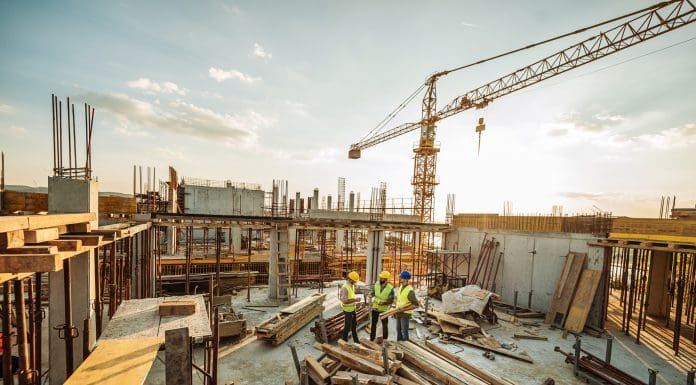Increasing construction material reuse could reduce waste and carbon emissions dramatically – but there are a number of barriers and challenges in the way. Declan Furey, associate director at Linesight UK, looks at how we square the economics of the circular supply chain
During last year’s UN Climate Summit, the World Green Building Council wrote an open letter calling for the introduction of regulatory policies needed to tackle climate change.
The letter outlined how these measures could not only bring down global emissions by 37% but also unlock $1.5tn in investment. This analysis shows that achieving net zero emissions by 2050 is no longer an aspirational goal – it’s an economic growth imperative.
But how can the industry move beyond the current models of energy-intensive material production and extraction while sustaining growth and avoiding additional costs?
The UK’s high landfill taxes act as an incentive for the industry to avoid waste; however, cost, availability, quality assurance and regulatory compliance remain key barriers to the widespread implementation of circular supply chains.
The increasing implementation of circular economy principles, seen through the so-called retrofit revolution and the rise of environmental product declarations (EPDs), could mean the solution is hiding in plain sight.
The UK Construction Industry Annual Waste report for 2023 states that 62% of the UK’s waste annual waste is generated by construction, demolition and excavation works.
This could be reduced dramatically. In fact, according to a report from the Green Alliance, the adoption of circular construction methods could see the industry’s carbon emissions cut by 39%.
At the same time, clients are becoming increasingly carbon aware. Carbon accounting is no longer just a “nice-to-have”.
It is increasingly a requirement for businesses to understand the embodied carbon of their existing portfolios. With environmental, social and corporate governance (ESG) targets becoming the norm for developers and investors alike, circularity looks to be the clear way to improve on sustainability credentials. However, this has different implications for different sectors.
The circular economy challenge
When it comes to project delivery in high-growth sectors, such as data centres and life sciences, material reuse may require a complete rethink of how we deliver projects. So, what are the key challenges associated with scaling up construction material reuse and how can we square the economics of the circular supply chain in high-growth sectors?
Reused materials have lower levels of embodied carbon than new materials. Currently, their use can be more expensive than purchasing off-the-shelf materials.
This is due to reused materials needing to undergo rigorous quality assurance tests before they can re-enter the supply chain to avoid any risks associated with prior use.
This requires additional time and skilled labour, all of which vary depending on the complexity of the project and the material in question.
In the case of timber, for instance, additional treatments may be needed to ensure fire safety compliance, while steel must undergo loadbearing assessments. Declaration of performance and CE marking remain a challenge for widespread implementation of construction material reuse.
Until we standardise reuse and develop a strong pipeline of materials, higher pricing will continue to be off-putting to clients who are dealing with price pressures from inflation, labour costs and supply chain disruptions.
Project delivery
Successful implementation of construction material reuse on new and existing buildings requires early engagement from all project stakeholders, clear communication with the client to identify the main carbon drivers and target-specific material specification during the detailed design stage.
Despite the associated challenges, construction material reuse remains an attractive option for clients looking to improve building performance and embodied carbon ratings in the coming years. With the right measures in place, reuse also has the potential to help with developing localised supply chains for key commodities, which may help to de-risk against price volatility in the global construction products market.
While more needs to be done to help scale up supply chains for reused materials, progress is being made in terms of industry thinking around a building’s whole lifecycle carbon output. The introduction of new standards such as the Royal Institute for Chartered Surveyors 2023 framework for the measurement of whole-life carbon for buildings is a big step forward. This is likely to go further with upcoming frameworks being developed by the Net Zero Carbon Building Standard taskforce.
As with most things, there may not be a one-size-fits-all solution. Material reuse, when combined with other circular development models such as Design for Manufacturing & Assembly, may be a workable solution to achieving sustainable construction goals and ultimately deliver net zero buildings by 2050.
As the industry seeks to realise the potential of this new guidance, improved access to reused materials and incentives to combat processing costs will be critical to helping the industry to realise both the economic and environmental benefits of circularity in the years to come.
Declan Furey
Associate director
Linesight UK
Tel: +44 (0)20 7784 7330
The post Exploring the possibility of construction material reuse appeared first on Planning, Building & Construction Today.


